Comments / Questions (244)
![]() Elisabeth wrote:
Elisabeth wrote:
Ich verstehe es leider immer noch nicht ganz. Im Muster A1 ist die erste und letzte Masche doch immer links?? Wo kommen die Zunahmen hinzu? Vor oder nach der linken Masche? UND wenn ich am Rumpf einen Umschlag und dann 2 M rechts stricke komme ich mit der zweiten rechten Masche in das Muster von A1.. und da soll doch aber eine linke sein?! Ich verstehe es leider nicht. Könnt ihr mir bitte nochmal eine detailliertere Erklärung geben. Vielen Dank!
16.05.2017 - 19:16DROPS Design answered:
Liebe Elisabeth, die Zunahmen werden vor oder/und nach A.1 gestrickt, dann sollen Sie 1 Umschlag vor A.1 (= vor dem 1. M = li Ma), und/oder nach A.1 (= nach dem letzten M = li Ma in A.1). Viel Spaß beim stricken!
17.05.2017 - 09:22
![]() Rodenburg wrote:
Rodenburg wrote:
In patroon nr.me-104 moet je A1 van links naar rechts lezen? of anders om? en van beneden naar boven? Deze trui brei je van boven naar beneden en in het rond. Daarom weet ik het niet meer, groetjes Anju
16.05.2017 - 17:07DROPS Design answered:
Hoi, De telpatronen lees je altijde van onder naar boven, dus de eerste naald van het telpatroon is de onderste naald, ongeacht of je van boven naar beneden breit of van beneden naar boven. Je leest het telpatroon van rechts naar links.
17.05.2017 - 11:32
![]() Joke wrote:
Joke wrote:
In dit model is dan het voor-en achterpand even hoog wat betreft de hals. Of kan ik ergens de hals in het voorpand wat lager maken?
16.05.2017 - 12:35DROPS Design answered:
Hallo Joke, Ja, dat klopt; het voor en achterpand heeft een gelijke hoogte bij de hals. Je zou een aantal verkorte toeren kunnen maken op het achterpand om de hals daar hoger te maken, maar ik denk dat dit patroon het mooist tot zijn recht komt als je voor- en achterpand gelijk houdt.
17.05.2017 - 11:21Gemma Pratt wrote:
I've not knit like this before so my question is probably really basic. Do I do the raglan first then follow the instructions for the increase on the body and sleeve or are they knitted at the same time. ie doing the raglan increases with the body and sleeve on the same round being every 2nd and fourth.
16.05.2017 - 00:14DROPS Design answered:
Dear Gemma, the increases on the body and the sleeves should be knitted at the same time, however the increases are slightly different rythm on the sleeves and on the body. This means, that there will be rounds where there are increase on the body (front and back) and the sleeves, and rounds where there are increases only on the body (front and back). I hope this helps. Happy Knitting!
16.05.2017 - 00:38
![]() Elisabeth wrote:
Elisabeth wrote:
Vielen Dank! Ich hab noch eine Frage: unter Zunahmetipps steht: 1 Umschlag, 2 M rechts.. Wenn ich aber vor dem A1 Muster 1 M zu nehme ist die 2 M eine linke Masche. Also wären 2 Maschen rechts ja nicht möglich. Zumindest sagt es das Muster so. Was verstehe ich da falsch? Lieben Dank!
15.05.2017 - 19:32DROPS Design answered:
Liebe Elisabeth, ZUNAHMETIPP betrifft die Zunahmen auf beiden Seiten wenn man Rumpfteil strickt. Für das Raglan wird wie unter RAGLANZUNAHMEN zugenommen. Viel Spaß beim stricken!
16.05.2017 - 08:27
![]() Annelies wrote:
Annelies wrote:
Het is mij jammergenoeg niet duidelijk waar de meerderingen gedaan moeten worden. Voor de raglan voor en na iedere A1? Maar waar moet ik meerderen voor het lijf (voor- en achterpand) en de mouwen? Bij de tips voor het meerderen wordt een markeerdraad vermeld maar kom ik die in het patroon niet tegen.
15.05.2017 - 16:27DROPS Design answered:
Hallo Annelies, Voor de raglan meerder je inderdaad voor en na A.1. De andere 'tip voor het meerderen' met de markeerdraden is bedoeld voor de rest van de trui, vanaf de splitsing van mouwen en lijf.
15.05.2017 - 19:58
![]() Elisabeth wrote:
Elisabeth wrote:
Oder wird, so verstehe ich es bei Rumpf sowie Ärmel jeweils ab der 2 Rd zugenommen (also nach Kraussrippen 1 Rd ohne Zunahmen und dann in der 2 Rd mit den Zunahmen beginnen?) Oder wird versetzt zugenommen? Und mein zweiter Knoten im Kopf betrifft das Muster: unter Zunahmetipps steht: 1 Umschlag, 2 M rechts.. Wenn ich aber vor dem A1 Muster 1 M zu nehme (1 Umschlag) ist die 2 M eine linke Masche. Zumindest sagt es das Muster so. Was verstehe ich da falsch? Lieben Dank!
13.05.2017 - 20:52
![]() Elisabeth wrote:
Elisabeth wrote:
Hallo liebes Team, ich verstehe die Muster/Zunahme nicht ganz. Ich habe es so verstanden: Die 1.Rd nach den Kraussrippen wird das Muster (8M, A1. etc) vorbereitet. In den darauffolgenden Runden beginnen die Zunahmen? Rumpf: was bedeutet in jeder Runde 0 x ? Ist die 0te Rd die nach den Kraussrippen?
13.05.2017 - 20:51DROPS Design answered:
Liebe Elisabeth, in den beiden ersten Größen werden Sie keine Zunahme jede Runde stricken, dh so wird es gearbeitet (direckt nach den Krausrippen): Rumpfteil: in jeder 2. Rd 22-25 x dann in jeder 4.Rd 2-2 x zunehmen + Ärmel: in jeder 2. Rd 18-23 x dann in jeder 4. Rd 4-3 x zunehmen. Viel Spaß beim stricken!
15.05.2017 - 09:17Marjola wrote:
I do not understand the increase tip. Two YOs on each side of the A.1and two knit stitches inbetween? Not likely, I know. Can you pls explain in other words to make it clearer. Is there a video for illustration?
11.05.2017 - 22:04DROPS Design answered:
Dear Marjola, the INCREASE TIP does not apply to raglan, but to inc on each side of body after armholes. For raglan, increase with a YO before and / or after A.1, see RAGLAN. Happy knitting!
12.05.2017 - 08:47
![]() Marisa Flores wrote:
Marisa Flores wrote:
Buenas tardes, tuve que deshacer varias veces porque me confunden las instrucciones del Raglan. Por un lado dice: aumentar a cada lado de A1 en cada transición del cuerpo a las mangas, pero también dice que aumente a cada lado del marcapuntos... ¿Sería: 8p, aumento, A1, aumento, 6p, aumento, A1, aumento, 16 p, aumento, A1, aumento, 6p, aumento, A1, aumento, 8p? Muchas gracias!!
08.05.2017 - 19:31DROPS Design answered:
Hola Marisa. Son dos cosas diferentes. Para los aumentos del RAGLÁN tienes que leer el apartado "RAGLÁN", para los aumentos en el cuerpo - el apartado "TIP PARA AUMENTAR".
10.05.2017 - 09:21
Wind Down#winddownsweater |
||||||||||||||||
 |
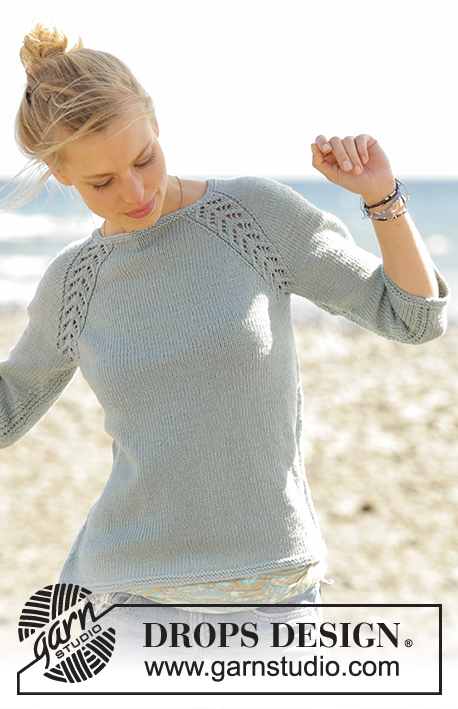 |
|||||||||||||||
Knitted jumper with raglan and lace pattern, worked top down in DROPS Merino Extra Fine. Sizes S - XXXL.
DROPS 175-1 |
||||||||||||||||
|
RIDGE / GARTER STITCH (worked in the round): 1 ridge = 2 rounds. Work 1 round knit and 1 round purl. PATTERN: See diagrams A.1 and A.2. The diagrams show all rows in the pattern from the right side. RAGLAN: Increase for raglan on each side of A.1 in each transition from the body to the sleeves. Increase 1 stitch by working 1 yarn over, on the next row work these yarn over stitches twisted knit to prevent holes. The increased stitches are worked in stocking stitch. NOTE: The increases are different on the body and the sleeves as explained in the text. INCREASE TIP: Work until there is 1 stitch left before the marker thread. Work 1 yarn over, knit 2 (the marker thread sits between these 2 stitches) and work 1 yarn over. On the next row, work the yarn over stitches in twisted knit to prevent holes (the increased stitches are worked in stocking stitch). ---------------------------------------------------------- The jumper is worked in the round on circular needle. It is worked top down. YOKE: Cast on 88-92-96-100-104-108 stitches with circular needle size 4 mm and Merino Extra Fine. Work 2 RIDGES – see description above. Continue to work as follows – from mid back: Work 8-9-10-11-12-13 stitches stocking stitch (= half the back piece), A.1 (= 11 stitches), 6 stitches stocking stitch (= sleeve), A.1, 16-18-20-22-24-26 stitches stocking stitch (= front piece), A.1, 6 stitches stocking stitch (= sleeve), A.1, 8-9-10-11-12-13 stitches stocking stitch (= half the back piece). Continue with this pattern, AT THE SAME TIME start the increases for RAGLAN – see description above. The increases are different for the body and the sleeves: INCREASE AS FOLLOWS ON THE BODY: Increase every round 0-0-0-3-5-7 times, then every 2nd round 22-25-28-31-33-35 times and every 4th round 2-2-1-0-0-0 times (in total 24-27-29-34-38-42 times). INCREASE AS FOLLOWS ON THE SLEEVE: Increase every 2nd round 18-23-28-30-28-28 times, then every 4th round 4-3-1-1-4-5 times (in total 22-26-29-31-32-33 times). After all the increases, there are 272-304-328-360-384-408 stitches on the needle. The piece measures approx. 18-20-21-23-25-27 cm from mid front. The next round is worked as follows: Work the first 38-42-45-51-56-61 stitches, put the next 60-68-74-78-80-82 stitches on a thread (= for the sleeve), cast on 8-8-10-10-12-14 new stitches, work the next 76-84-90-102-112-122 stitches, put the next 60-68-74-78-80-82 stitches on a thread (= for the sleeve), cast on 8-8-10-10-12-14 new stitches, work the last 38-42-45-51-56-61 stitches. BODY: = 168-184-200-224-248-272 stitches. Insert 1 marker thread in each side in the middle of the 8-8-10-10-12-14 new stitches that have been cast on. Continue working stocking stitch across all the stitches. THE PIECE IS NOW MEASURED FROM HERE! When the piece measures 4 cm, increase 1 stitch on each side of the marker threads in the sides (= 4 stitches increase) – READ INCREASE TIP! Increase every 4½ cm in total 6 times = 192-208-224-248-272-296 stitches. When the piece measures 34-34-35-35-35-35 cm work 2 ridges, then cast off. The jumper measures a total of approx. 56-58-60-62-64-66 cm. SLEEVE: Put the stitches from the thread back on a short circular needle/double pointed needles, in addition knit up 1 stitch in each of the 8-8-10-10-12-14 new stitches under the sleeve = 68-76-84-88-92-96 stitches. Insert 1 marker thread mid under the sleeve. THE PIECE IS NOW MEASURED FROM HERE! Work A.2 across the middle 6 stitches under the sleeve, the rest of the stitches are worked in stocking stitch. When the piece measures 3 cm decrease 1 stitch on each side of A.2, decrease every 2½-1½-1½-1-1-1 cm in total 11-14-17-18-18-19 times, decrease by knitting 2 stitches together = 46-48-50-52-56-58 stitches. Continue with stocking stitch and A.2 until the sleeve measures 30-28-28-26-25-23 cm (shorter measurements in larger sizes due to wider neck and longer yoke), work 2 ridges. Cast off. Work the other sleeve in the same way. |
||||||||||||||||
Diagram explanations |
||||||||||||||||
|
||||||||||||||||
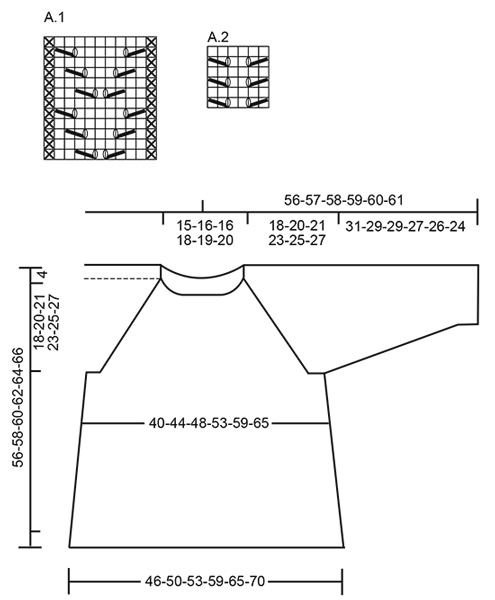 |
||||||||||||||||
Have you finished this pattern?Tag your pictures with #dropspattern #winddownsweater or submit them to the #dropsfan gallery. Do you need help with this pattern?You'll find 30 tutorial videos, a Comments/Questions area and more by visiting the pattern on garnstudio.com. © 1982-2025 DROPS Design A/S. We reserve all rights. This document, including all its sub-sections, has copyrights. Read more about what you can do with our patterns at the bottom of each pattern on our site. |
||||||||||||||||








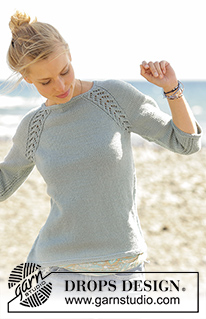




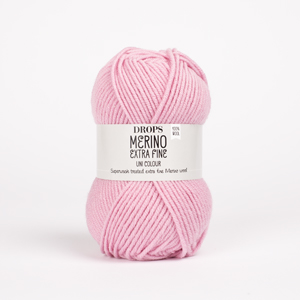
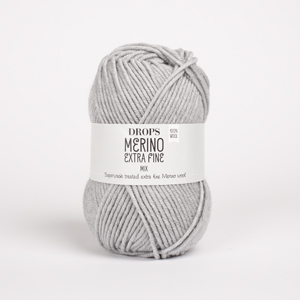



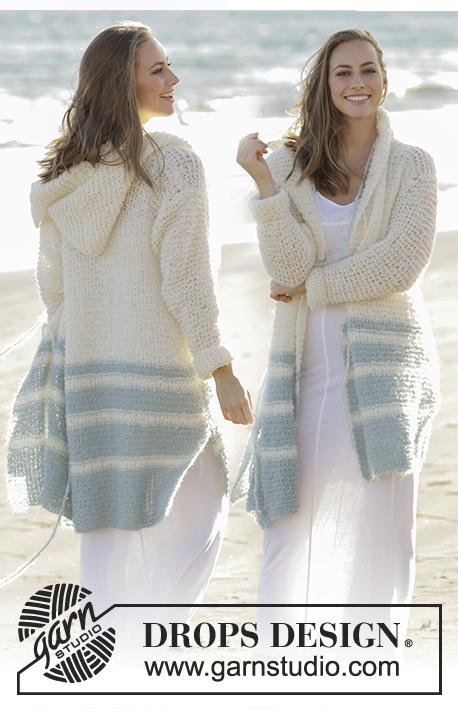




















































Post a comment to pattern DROPS 175-1
We would love to hear what you have to say about this pattern!
If you want to leave a question, please make sure you select the correct category in the form below, to speed up the answering process. Required fields are marked *.